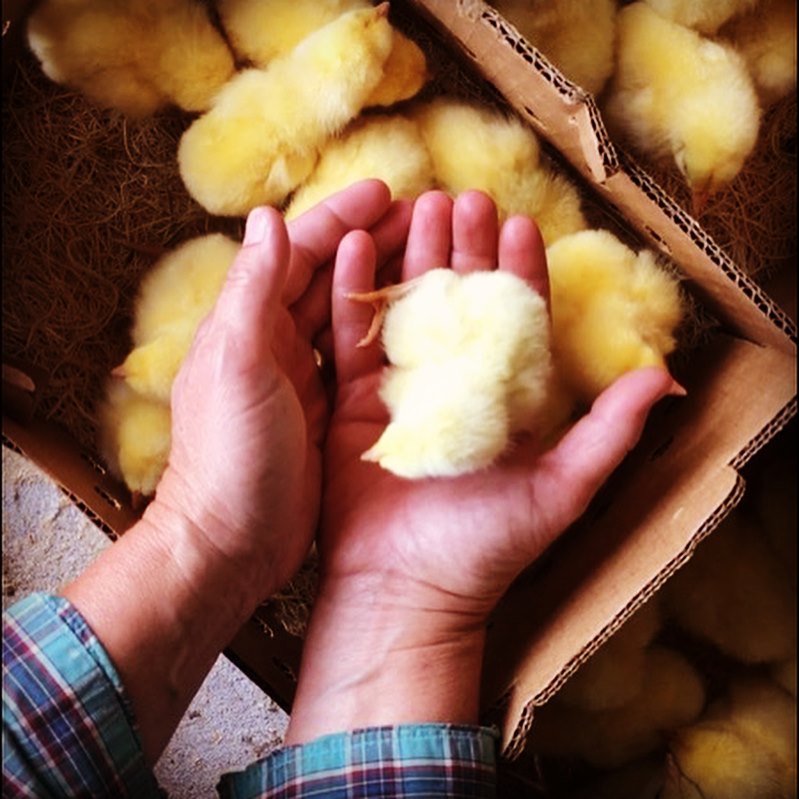Springtime on our farm is filled with babies of all sorts. Baby goats and lambs are bouncing all over the barn, racing up and down, playing ‘king of the mountain’ by climbing on their un-amused mothers, and practicing butting heads. There are literal piles of babies sleeping in every corner, because they love to cuddle with one another for warmth while their moms eat hay. It is such a busy, chaotic time, it is hard to imagine how all the moms and babies keep things straight. Yet, somehow, they do.
Meanwhile, we have hundreds of peeping baby chicks in our brooders. Heat lamps keep them toasty and warm; fresh, fluffy shavings keep them dry. These impossibly tiny things have no mother to watch over them, so the job falls to me to brood over their happiness and health. And brood I do—fretting over their food and water, checking their bedding and temperature of the brooders, and enduring sleepless nights when the wind whips and the temperatures drop below freezing.
It is an exhausting, amazing time.

As magical as a barn full of baby farm animals may sound, it represents a fair amount of work, tons of observation, and knowing when to step in. For example, I learned long ago to watch for signs that a pregnant ewe or doe may need assistance during birth. Nine times out of ten, the nose comes first, with a front hoof or perhaps two; and the amniotic fluids will be only slightly tinged with color. If things do not progress fairly quickly, if the amniotic fluids are dark in color, or if there is only a hoof or two (and no head)—it is time to step in. Baby’s head may be turned back, rather than towards the birth canal; two may be trying to come out at once; or the legs need a little tug. Either way, it falls to me to roll up my sleeves (literally) and help.
After the baby (or babies!) are born, I give mum and her babes the best environment possible—a small pen just for them. (For us humans, it is kind of like getting a room all to yourself in the maternity ward.) This allows mum to have undivided attention on her newborn(s) and no pressures from the rest of the herd. I then pause to watch mum and observe her behaviors. Amongst other things, I listen for the faint “chatter” between a mom and her new baby. No chatter…might not be a good mum. If needed, I will help guide baby to the udder; other times I will milk mum a little, to get the juices flowing (so to speak). There is a relatively small window for everyone to bond properly and I make sure I do everything in my power to make sure it happens.
Watching the baby chicks, too, is super important. If they are all huddled directly under the heat lamps or piling on top of one another—they are too cold. If they are damp and have moved as far away from the heat lamps as possible—they are too hot. I add fresh shavings as needed and increase food and water levels as I observe them taking in more and more. I am a little like Goldie Locks and the Three Bears, making sure the baby chicks enjoy conditions that are “just right”!
I have said it many times over the years, but closely observing animals is key to avoiding problems. Knowing what well-fed babies and healthy moms look and act like helps me spot problems before they become insurmountable.
So, if you see me in the grocery store or at the post office and I seem to be in a zombie-like state, you’ll know why. My mind is completely preoccupied by that barn full of rambunctious baby goats, lambs, and peeping chicks!